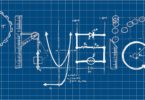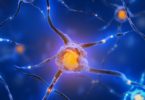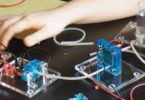Ques. Kreb’s has been awarded Nobel Prize in 1953 for explaining
(a) Energy forming process in the cell
(b) ATP metabolism
(c) Respiration chain
(d) Oxidation of cytoplasm
Ques. The product formed by maleic dehydrogenase is
(a) Maleic acid
(b) Fumaric acid
(c) Oxaloacetic acid
(d) Succinic acid
Ques. In presence of TPP and carboxylase, pyruvic acid is transformed into
(a) Acetaldehyde and CO2
(b) Ethyl alcohol and CO2
(c) Citric acid and CO2
(d) None of the above
Related: Polymers Question Bank
Ques. Which of the coenzyme is used in acetylation reaction
(a) CoA
(b) FAD
(c) FMN
(d) None of the above
Ques. Kreb’s cycle is termed as the aerobic phase of respiration because
(a) It consumes oxygen
(b) Oxygen acts as a catalyst
(c) Aerobic conditions are essential for the continued operation of electron transport system
(d) All the above
Ques. Which of the following is not a part of Kreb’s cycle
(a) Dehydrogenation
(b) Acetylation
(c) Oxidative phosphorylation
(d) Decarboxylation
Ques. Kreb’s cycle is also known as
(a) Glyoxylate cycle
(b) EMP pathway
(c) Citric acid cycle
(d) Glycolate cycle
Related: Engineering Thermodynamics question with answers
Ques. In respiration, pyruvic acid is
(a) Formed only when oxygen is available
(b) One of the product of Kreb’s cycle
(c) Broken down into two carbon fragments and CO2
(d) A result of protein breakdown
Ques. Kreb’s cycle starts with the formation of six carbon compounds by reaction between
(a) Maleic acid and acetyl CoA
(b) Succinic acid and pyruvic acid
(c) Fumaric acid and pyruvic acid
(d) Acetyl CoA and oxaloacetic acid
Ques. In which among the following oxidative phosphorylation occurs during electron transport
(a) Chloroplast
(b) Ribosomes
(c) Mitochondria
(d) Glyoxysomes
Ques. Largest amount of phosphate bond energy is produced in the process of respiration during
(a) Anaerobic respiration
(b) Glycolysis
(c) Kreb’s cycle
(d) None of the above
Ques. In Kreb’s cycle the hydrogen atoms removed at succinate level are accepted by
(a) FAD
(b) ADP
(c) ATP
(d) NAD
Ques. The membrane bound enzyme involved in Kreb’s cycle is
(a) Malate dehydrogenase
(b) Fumarase
(c) cis acotinase
(d) Succinic dehydrogenase
Related: Question Bank on Physical Quantities and Units (Physics)
Ques. Biological oxidation in Kreb’s cycle involves
(a) N2
(b) CO2
(c) O2
(d) SO2
Ques. Kreb’s cycle involves the formation of
(a) Lactic acid from glucose
(b) Change of pyruvic acid to energy transformation
(c) Pyruvic acid from glucose
(d) ATP from ADP
Ques. Kreb’s cycle begins with
(a) Pyruvic acid
(b) Hydrochloric acid
(c) Corticosteroids
(d) Lysine
Ques. Kreb’s cycle takes place in
(a) Chloroplast
(b) Peroxisomes
(c) Mitochondria
(d) Cytoplasm
Related: Ionic Equilibrium Important Questions
Ques. Kreb’s cycle is also called
(a) TCA cycle
(b) Citric acid cycle
(c) Tricarboxylic cycle
(d) All the above
Ques. Which of the following is produced during Kreb’s cycle
(a) Citric acid
(b) Lactic acid
(c) Acetyl coenzyme–A
(d) Acetic acid
Ques. Which transfer electrons in E.T.S. (electron transport system)
(a) Phytochrome
(b) F1 particles
(c) Fe – S
(d) Cytochrome
Related: Chemical Equilibrium Practice Problems
Ques. Kreb’s cycle is found in
(a) Anaerobic respiration
(b) Photorespiration
(c) Photosynthesis
(d) Aerobic respiration
Ques. Which of the following is not an intermediate of Kreb’s cycle
(a) Acetyl Co-A
(b) Citric acid
(c) Succinic acid
(d) Lactic acid
Ques. Which can accept a hydride ion during electron transduction system?
(a) FADH, NADH
(b) FAD+, NADP+
(c) FAD+, NADH
(d) FADH, NAD+
Ques. Which of the following is important in electron transport system
(a) Ubiquinone
(b) Acetyl CoA
(c) Tricarboxylic acid
(d) Ferricyanide
Ques. Kreb’s cycle is also called as :
(a) Tricarboxylic acid cycle
(b) Oxidative phosphorylation
(c) EMP pathway
(d) Glycolysis
Related: Important Questions on Solid State
Ques. Enzymes of oxydative phosphorylation found in
(a) Endoplasmic reticulum
(b) Chloroplast
(c) Mitochondria
(d) Golgi complex
Ques. Oxidative phosphorylation and photophosphorylation both require the electron carrier
(a) Cytochrome
(b) Oxygen
(c) Carbon dioxide
(d) Water
Ques. The cycle in which pyruvic acid is broken down in presence of oxygen is known as
(a) Glycolysis
(b) Kreb’s cycle
(c) Anaerobic respiration
(d) None of the above
Related: Chemical Kinetics Examples of Multiple Choice Questions
Ques. In ATP molecule energy is stored in
(a) Chemical bonds
(b) Hydrogen bonds
(c) Carbon bonds
(d) Pyrophosphate bonds






